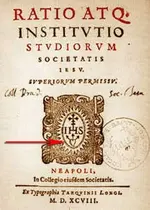Good morning Jim: Since I have been shot twice, I might as well go for the third.
There is no contest in the Jesuits being at head of the state of the Art in Celestial Navigation and the sciences of mathematics, but they could only work with the tools and knowedge of their times.
Accurate timekeepers were not available until the late 1700. or early 1800's. To establish longitude, time was crucial in those days. It was used to establish the difference in time between your position and Greenwich. this gave you your basis for your longitude.
Until the advent of the Sextant, the then used angular measuring tools were just not that accurate.
They established an observatory in Peking, China in the 1600 / 1700's which rapidly became a center of celestial observations. They then proceeded to measure the location of various cities in China and India, also the land areas of both countries.
Considering the task, and their tools, they did remarkably well. Their final errors ran from only 2 degrees to ,45 minutes.
I presume that I don't have to convert those errors into land measurements for you, but for those that are not acquainted with this, 2 degrees = 60 miles. .45 minutes = 27 miles.
In WW-2 we were doing fairly good if we could locate ourselves within !/2 mile at sea.
If we apply that error to the superstitions and the stone maps --hmmmmm

?
Simple triangular measurements, perhaps. However if this was done, and you have the key , may I ask just why ----------?? hmmm
Of course the basic question for me is "if so, why so unnecessarily complicated with unusable measurements?
Incidentally, I am willing to try for that third shot, what evidence do you have for your remarks about sophisticated measurements being incorporated / established in the Stone maps

Don Jose de La Mnacha



 these days.
these days.






 haha) so I have never had the pleasure and advantage of LIVING close enough to the Superstitions to just go whenever I felt like it. Anyway I think that a person with absolutely zero experience can certainly contribute to our discussions, and sometimes a new set of eyes (and brains) can bring a breakthrough.
haha) so I have never had the pleasure and advantage of LIVING close enough to the Superstitions to just go whenever I felt like it. Anyway I think that a person with absolutely zero experience can certainly contribute to our discussions, and sometimes a new set of eyes (and brains) can bring a breakthrough.  ?
?